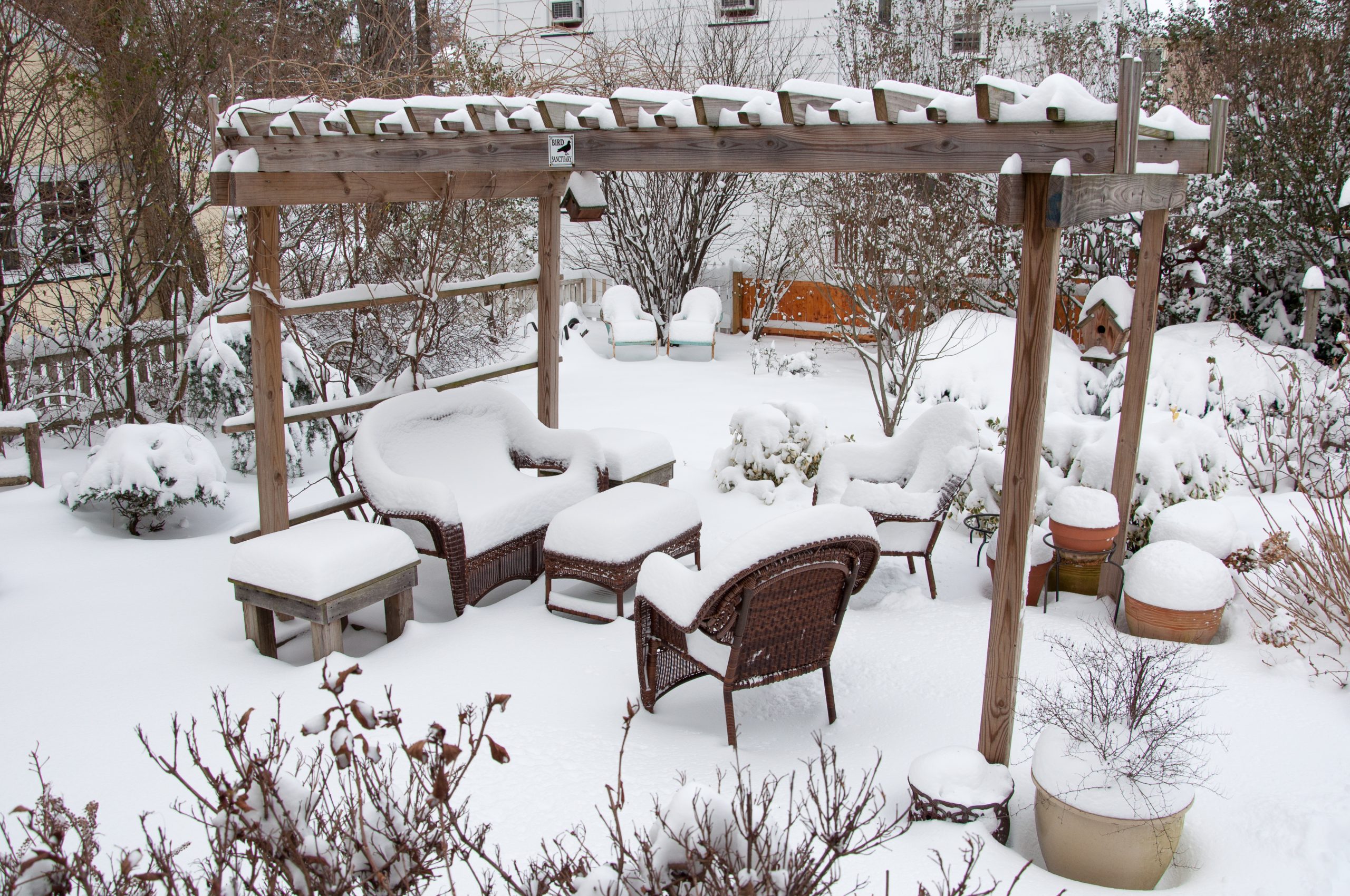How to Create an Edible Garden

From fresh, flavourful herbs to homegrown vegetables and fruits, having an edible garden means enjoying sustainable, organic produce right outside your back door. Whether you have an expansive outdoor space or just a small patio, starting an edible garden is easier than you think.
Planning Your Edible Garden
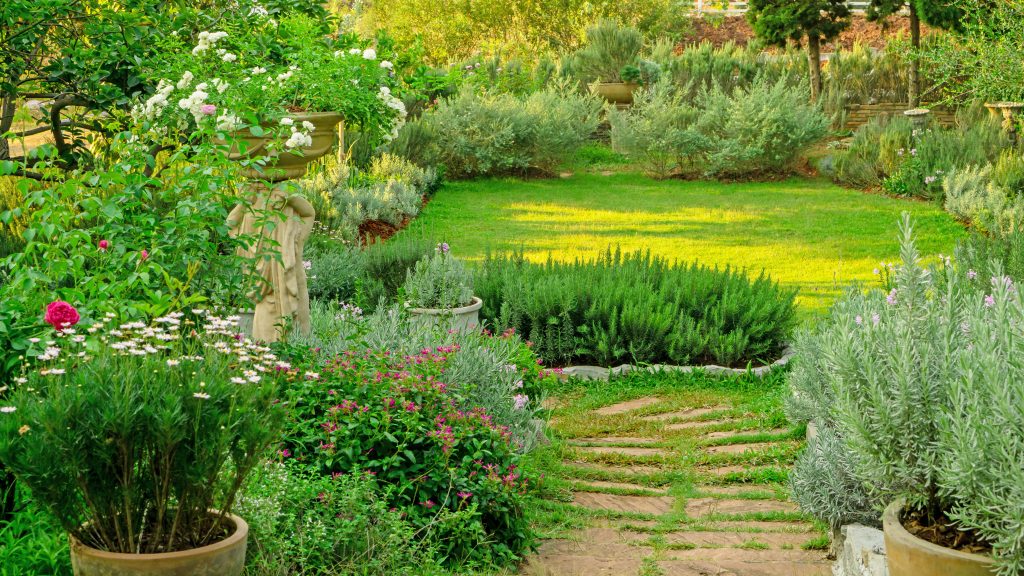
No matter the size of your space, proper planning and a little creativity can turn any area into a productive food source, yielding satisfying harvests for you and your family.
Large Edible Gardens
For those with more room, raised beds are a fantastic option. They provide excellent drainage, allow you to control the soil quality, and make tending to your plants easier.
Raised beds can be built in various sizes, so you can customise them to fit your garden perfectly. They're particularly useful for growing vegetables like carrots, lettuce, and tomatoes, which thrive in deep, nutrient-rich soil.
Small Edible Gardens
If you have limited space, consider starting a container garden. Containers are incredibly versatile, making them ideal for small patios, balconies, or courtyards. They’re perfect for herbs like basil and rosemary, which don’t need much space to flourish. You can also grow compact vegetables such as peppers and leafy greens.
The beauty of container gardening is its flexibility – you can move plants around to catch the sun or create the perfect layout for your space.
Indoor Edible Gardens
For those with no outdoor area, a kitchen garden is the way to go. By using window sills or small shelves near natural light, you can still grow a range of edibles. Herbs, cherry tomatoes, and even strawberries can thrive indoors with the right care.
Consider using vertical gardening techniques like hanging baskets or wall-mounted planters to maximise space.
What to Grow In Your Edible Garden
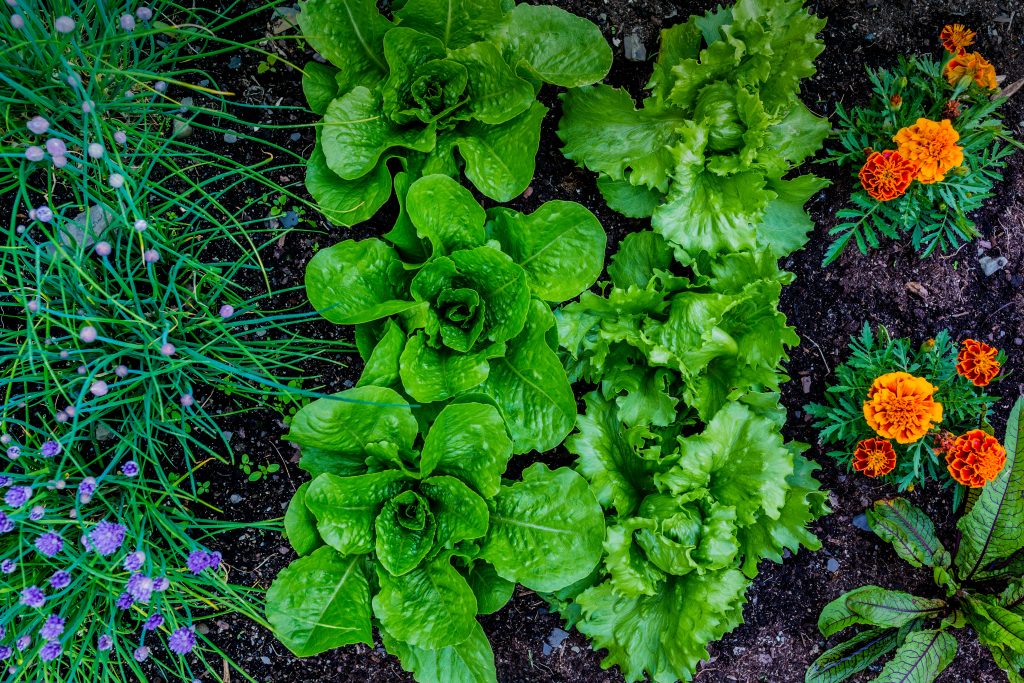
When starting an edible garden, it's important to choose plants that are beginner-friendly and suited to the UK climate. Here's a list of herbs, vegetables, and fruits that are easy to grow and can flourish in most home gardens:
Best Herbs for Edible Gardens
Herbs are perfect for novice gardeners, as they’re generally hardy and require minimal care. Popular choices include:
- Basil: Thrives in warm, sunny spots and does well in pots or window boxes. Keep the soil moist and pinch the tops regularly to encourage bushy growth.
- Mint: This vigorous herb grows well in containers to prevent it from spreading uncontrollably. Mint prefers partial shade and moist soil.
- Rosemary: A hardy perennial that can withstand colder climates, rosemary grows best in well-drained soil and full sun. Its evergreen nature ensures fresh herbs year-round.
- Parsley: Ideal for cooler conditions, parsley is a versatile herb that can be grown in pots or garden beds. Keep it well-watered for optimal results.
Best Vegetables for Edible Gardens
Vegetables are the heart of an edible garden. Here are some great choices for UK gardeners:
- Lettuce: Quick-growing and ideal for cooler temperatures, lettuce can be harvested within weeks of planting. It thrives in partial shade and can be grown in raised beds or containers.
- Tomatoes: Cherry tomatoes are a great option for beginners. They grow well in pots or hanging baskets, especially in sunny spots. Support the plants as they grow and water regularly.
- Carrots: These root vegetables do well in deep, loose soil, making them ideal for raised beds. They require plenty of sunlight and consistent watering.
- Peas: Peas are easy to grow in the UK’s cool climate. Use a trellis or support to help them climb, and they’ll reward you with sweet, tender pods.
Best Fruits for Edible Gardens
For a sweet harvest, consider adding these fruits to your garden:
- Strawberries: One of the easiest fruits to grow in the UK, strawberries flourish in containers, hanging baskets, or directly in the ground. They love full sun and well-drained soil.
- Raspberries: These low-maintenance fruits grow best in cooler climates and are perfect for UK gardens. Plant them in well-drained soil and ensure they get full sun or partial shade.
- Apples: If you have more space, apple trees are a fantastic addition to your edible garden. There are many dwarf varieties available that can even be grown in pots. They require regular pruning and a sunny location.
Harvest More With Companion Planting
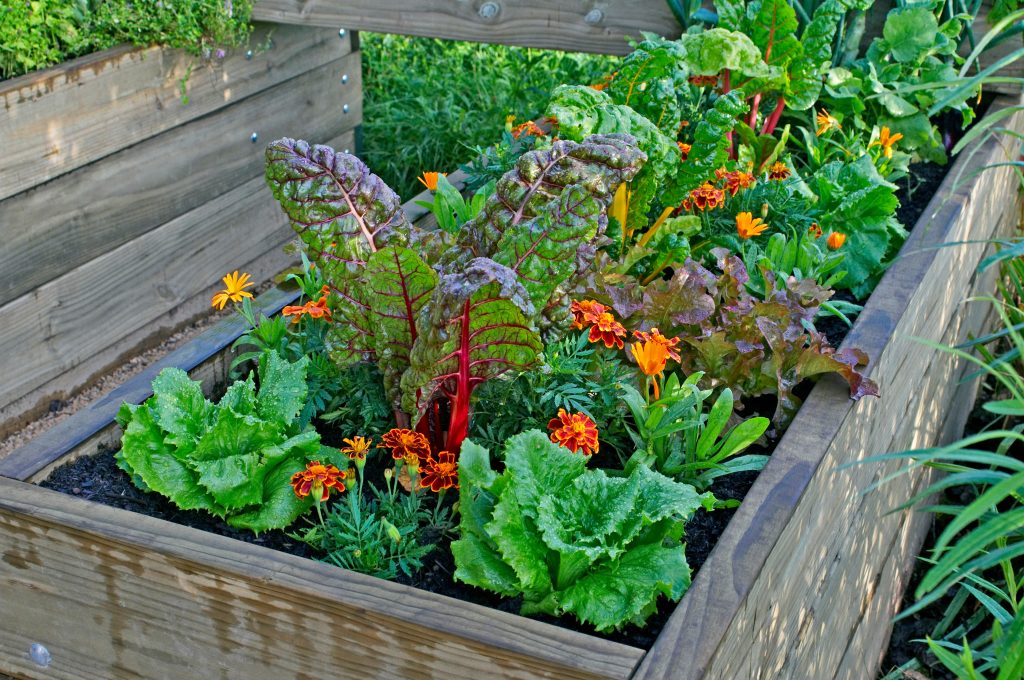
Companion planting is a time-tested technique that involves growing certain plants together to enhance their growth and health. This method helps make the most of your harvest by improving yields, repelling pests, and promoting healthier plants without the need for chemical interventions.
The Advantages of Companion Planting
One of the key benefits of companion planting is pest control. Some plants naturally repel insects that may harm neighbouring crops. For example, basil planted alongside tomatoes helps deter pests like aphids and tomato hornworms, while also enriching the flavour of the tomatoes. Similarly, planting marigolds around your vegetable garden can help keep nematodes and other harmful insects at bay.
Companion planting can also improve soil conditions and boost plant productivity. Legumes, like peas and beans, fix nitrogen in the soil, benefiting nearby plants that rely on nitrogen, such as lettuce or spinach. In another effective combination, carrots and onions work well together because the scent of onions repels carrot flies, and the carrots help break up the soil for the onions.
Setting Up Raised Beds for Success

Raised beds are an excellent way to grow edibles, offering several advantages such as improved drainage, better soil control, and easier access for planting and harvesting. Whether you're working with a small garden or dealing with poor soil, raised beds can provide the perfect solution for growing a thriving edible garden.
Choosing the Right Materials
When building a raised bed, selecting the right materials is key. Wood is a popular choice due to its affordability and availability. Hardwood like oak or cedar is durable and naturally resistant to decay, while softwoods can also work well if treated to withstand the elements.
Alternatively, materials like brick or stone can create a more permanent and decorative feature in your garden. Aim for beds that are 20–30 cm (8–12 inches) high, but deeper beds are ideal for root vegetables like carrots.
Soil Preparation
One of the major benefits of a raised bed is the ability to control the soil quality. Fill your raised bed with a mix of good-quality compost, topsoil, and organic matter, ensuring it is rich in nutrients. This allows you to create the ideal environment for growing edibles, even if the natural soil in your garden is poor.
Raised beds also improve drainage, preventing waterlogging, which is especially useful in areas with heavy rainfall.
Ideal Dimensions
When planning your raised bed, keep accessibility in mind. A width of around 1.2 metres (4 feet) is ideal, allowing you to easily reach the centre of the bed from either side without stepping on the soil and compacting it. The length of the bed can be adjusted to fit your garden, but shorter beds around 2–3 metres (6–10 feet) are easier to maintain.
Mastering the Vertical Edible Garden
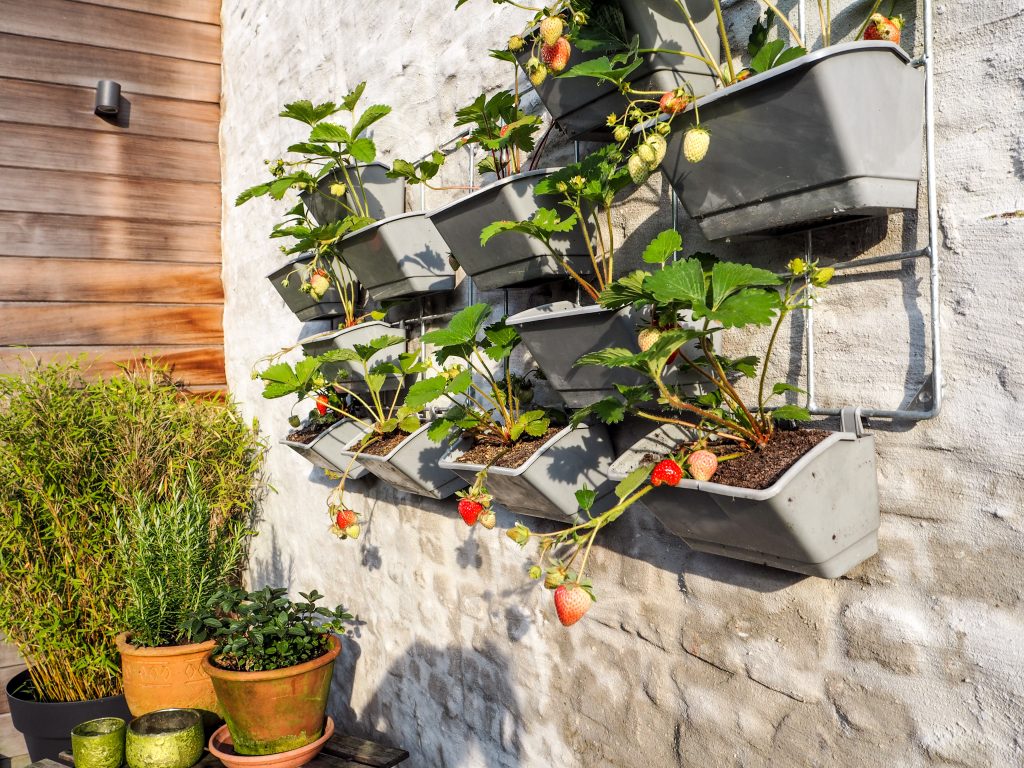
If you're short on space but still want to grow your own food, vertical gardening is the perfect solution. This clever technique allows you to make the most of limited areas like patios, balconies, or even a windowsill in your kitchen garden, by growing upwards instead of outwards. With the right approach, you can enjoy a bountiful harvest in the smallest of spaces.
Trellises and Climbing Plants
Crops like cucumbers, peas, and beans are natural climbers and thrive when given support to grow upwards. Trellises can be attached to walls, fences, or free-standing structures, making them ideal for small gardens or balconies. Not only does this save space, but it also improves air circulation around your plants, reducing the risk of disease.
Wall Planters and Hanging Baskets
For those with very limited ground space, wall-mounted planters or hanging baskets are fantastic options. Herbs like basil, parsley, and thyme grow well in these conditions, providing fresh ingredients within easy reach.
Creative Use of Vertical Structures
Repurpose old ladders as tiered plant stands, or install shelves on an outside wall to hold pots of strawberries or salad greens. You can even use railing planters for growing compact vegetables on a balcony.
The Importance of Soil and Composting

Healthy, nutrient-rich soil ensures that the plants in your edible garden have the best chance to thrive, offering strong growth and abundant harvests. Whether you're using raised beds, containers, or planting directly in the ground, paying attention to your soil quality is key to growing edibles successfully.
Enriching Your Soil
Over time, garden soil can become depleted of essential nutrients. The best way to revitalise your soil is by adding compost. Composting improves soil structure, boosts its nutrient content, and increases its ability to retain water.
Starting Your Own Compost System
You can easily start your own composting system using kitchen scraps and garden waste. Items like vegetable peelings, fruit cores, coffee grounds, and eggshells make excellent compost material, as do grass clippings and fallen leaves. Just avoid adding meat, dairy, or cooked food, as these can attract pests.
To create a simple compost system, you can use a compost bin or even a pile in a corner of your garden. Alternate layers of ‘green’ waste (like food scraps and fresh grass) with ‘brown’ waste (such as dried leaves or cardboard). Turn the compost regularly to aerate it, and in a few months, you'll have rich, dark compost ready to mix into your garden beds.
Caring for Your Edible Garden

Once your edible garden is established, proper maintenance is essential to keep your plants healthy and productive. Here are some key tips and tricks on how to care for your garden, ensuring you enjoy the full benefits of growing your own food.
Watering Schedules
Most edibles, especially vegetables, need regular watering, particularly during hot, dry spells. Water in the early morning or late afternoon to reduce evaporation and avoid wetting the foliage, which can lead to disease. Aim to water the soil directly and keep it moist but not waterlogged.
Pruning and Weeding
Regular pruning encourages healthier growth by allowing plants to focus energy on producing fruit and vegetables rather than excessive leaves. For plants like tomatoes, pinch out the side shoots to promote better airflow. Meanwhile, regular weeding is essential to reduce competition for water and nutrients. A simple hoe or hand-pulling weeds early can keep your garden in check.
Pest Management
Organic pest control is a great way to protect your garden while avoiding harmful chemicals. Introduce beneficial insects, such as ladybirds, to control aphids, or use natural remedies like neem oil to deter pests. Companion planting, as mentioned above, also helps repel unwanted insects.
Extending the Growing Season
To extend your harvest into the cooler months, consider using cloches or polytunnels. These simple structures protect your plants from frost and cold winds, allowing you to grow crops like lettuce, spinach, and carrots well into autumn or early winter.
Harvesting and Enjoying Your Homegrown Produce
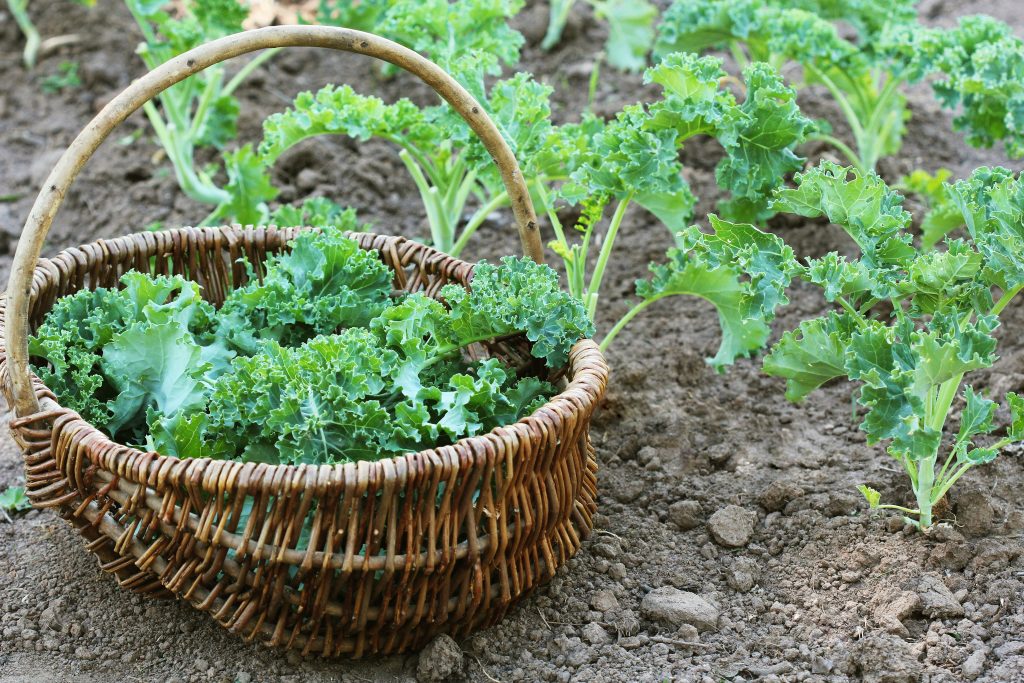
One of the most rewarding moments of having an edible garden is harvesting your fresh fruits and vegetables.
- For herbs like basil and mint, regular harvesting encourages further growth – simply pinch off the leaves when needed.
- Tomatoes should be harvested when they are fully coloured and firm but slightly soft to the touch.
- Lettuce and leafy greens can be cut as soon as they reach the desired size.
- Root vegetables like carrots and radishes are ready to pull when their tops emerge slightly from the soil. Don’t wait too long, as they can become tough or lose flavour if left in the ground.
For a simple and delicious recipe, toss your fresh tomatoes, basil, and mixed salad greens with olive oil, balsamic vinegar, and a sprinkle of salt for a refreshing summer salad. Or you could try a homemade pesto with basil, garlic, and olive oil blended together and served over pasta.
Grow Your Own Food at Home

There’s no better time to start your own edible garden. The satisfaction of watching your herbs, fruits, and vegetables thrive – and then using them in your meals – is unmatched. Edible gardens help you and your family to benefit from healthier, more flavourful ingredients, while also lowering your environmental footprint and saving you some money along the way.
Don’t let space or experience hold you back. With the right planning, care, and a little patience, you can create a flourishing edible garden, no matter the size. So, take the plunge today and start growing the food you’ll soon be proud to harvest!



